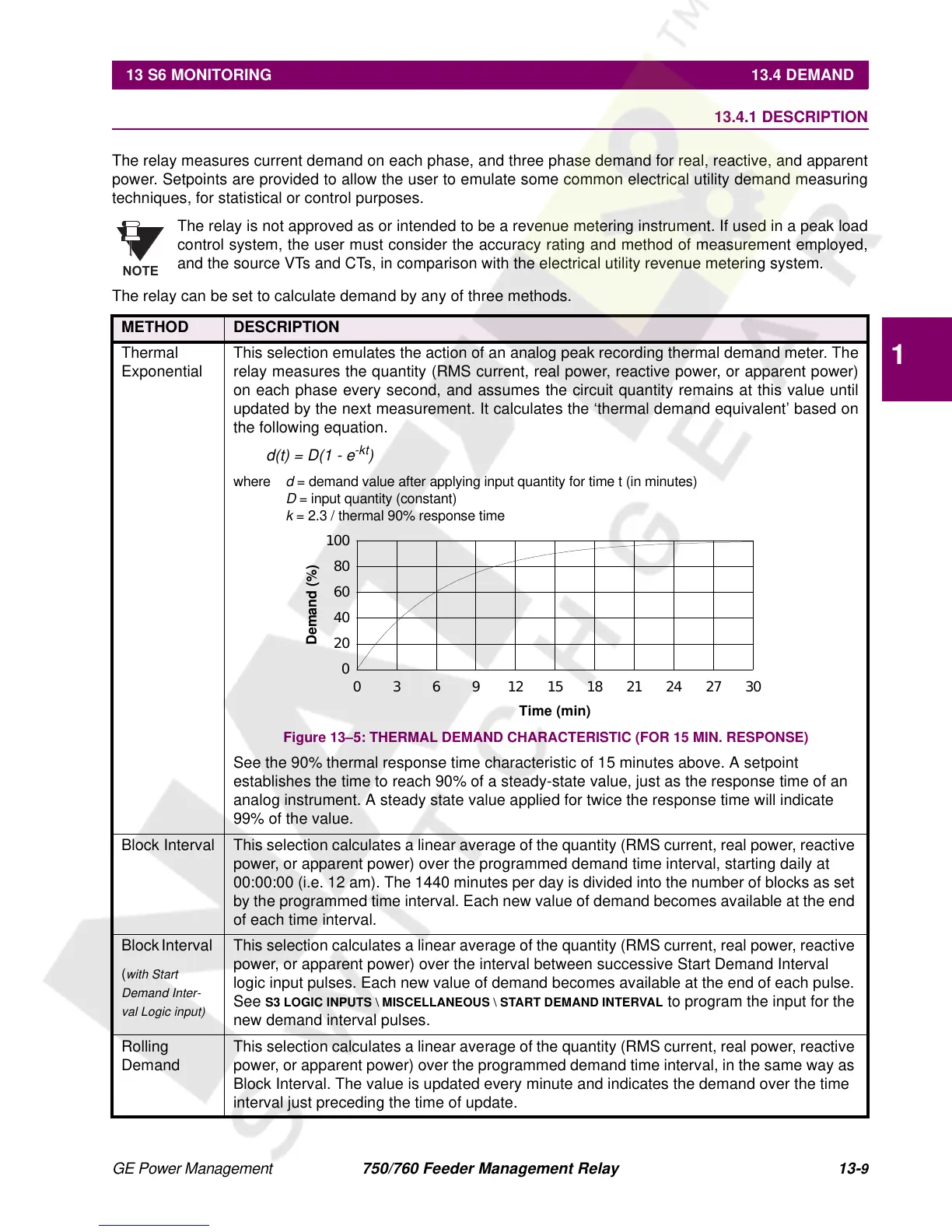GE Power Management 750/760 Feeder Management Relay 13-
9
13 S6 MONITORING 13.4 DEMAND
13
13.4 DEMAND 13.4.1 DESCRIPTION
The relay measures current demand on each phase, and three phase demand for real, reactive, and apparent
power. Setpoints are provided to allow the user to emulate some common electrical utility demand measuring
techniques, for statistical or control purposes.
The relay is not approved as or intended to be a revenue metering instrument. If used in a peak load
control system, the user must consider the accuracy rating and method of measurement employed,
and the source VTs and CTs, in comparison with the electrical utility revenue metering system.
The relay can be set to calculate demand by any of three methods.
METHOD DESCRIPTION
Thermal
Exponential
This selection emulates the action of an analog peak recording thermal demand meter. The
relay measures the quantity (RMS current, real power, reactive power, or apparent power)
on each phase every second, and assumes the circuit quantity remains at this value until
updated by the next measurement. It calculates the ‘thermal demand equivalent’ based on
the following equation.
d(t) = D(1 - e
-kt
)
where
d
= demand value after applying input quantity for time t (in minutes)
D
= input quantity (constant)
k
= 2.3 / thermal 90% response time
Figure 13–5: THERMAL DEMAND CHARACTERISTIC (FOR 15 MIN. RESPONSE)
See the 90% thermal response time characteristic of 15 minutes above. A setpoint
establishes the time to reach 90% of a steady-state value, just as the response time of an
analog instrument. A steady state value applied for twice the response time will indicate
99% of the value.
Block Interval This selection calculates a linear average of the quantity (RMS current, real power, reactive
power, or apparent power) over the programmed demand time interval, starting daily at
00:00:00 (i.e. 12 am). The 1440 minutes per day is divided into the number of blocks as set
by the programmed time interval. Each new value of demand becomes available at the end
of each time interval.
Block Interval
(
with Start
Demand Inter-
val Logic input)
This selection calculates a linear average of the quantity (RMS current, real power, reactive
power, or apparent power) over the interval between successive Start Demand Interval
logic input pulses. Each new value of demand becomes available at the end of each pulse.
See
S3 LOGIC INPUTS \ MISCELLANEOUS \ START DEMAND INTERVAL
to program the input for the
new demand interval pulses.
Rolling
Demand
This selection calculates a linear average of the quantity (RMS current, real power, reactive
power, or apparent power) over the programmed demand time interval, in the same way as
Block Interval. The value is updated every minute and indicates the demand over the time
interval just preceding the time of update.
NOTE
Time (min)
Demand (%)
0
20
40
60
80
100
0 3 6 9 12 15 18 21 24 27 30
